The 2017 edition of Artissima opened to the public today(details and practical information here): 206 galleries were present, from 31 countries, bringing to theOval Lingotto in Turin more than two thousand works by seven hundred different artists. It is difficult to make a quick and concise selection: aware that any “summary,” especially if so brief, will never be sufficiently complete, we have tried to give you an idea, and so we propose the selection of the top fifteen works according to Finestre sull’Arte (in-kind media partner of Artissima 2017). We have divided it into three categories: five works by artists who are already established and known to the public, five works by young talents who will be making waves in the future, and five works that you absolutely must not miss. We have not considered the works of the Italian Present Art Depot, because we will devote a separate focus to this project. For the full catalog, we suggest you check out www.artissima.it.
Established Artists
1. Jan Fabre, Adelaarsboom (Silent Screams, Difficult dreams) (1992; Venetian glass, fabric, bic pen, metal, and wood). Proposed by: Mario Mauroner Contemporary Art - Salzburg / Vienna, Austria.
Adelaarsboom, in Dutch, literally means “Tree of Eagles.” It is a work belonging to a series titled Silent Screams, Difficult Dreams, in which Jan Fabre (Antwerp, 1958) stages bizarre little theaters populated by eerie figures (in this case the protagonists are the three eagles one on top of the other) drawn from the imaginary world of a girl, Helena, a woman Fabre really knew and who lived in a world of her own, filled with symbolic references. Silent Screams, Difficult Dreams originated as a play that was part of a trilogy(The minds of Helena Troubleyn) dedicated precisely to this bizarre female figure.

2. Maurizio Nannucci, Look (2005; neon, red Murano glass, 200 x 400 x 1.5 cm). Proposed by: Enrico Astuni - Bologna, Italy.
The large neon sign by Maurizio Nannucci (Florence, 1939) is already among the most photographed works of the 24th edition of Artissima. Neon is the typical medium of the Tuscan artist, who uses it to reflect on language and the way the latter relates to the space within which it is inserted. “Neon,” says the artist, “gives me the possibility to form and transform space into sensations and concepts that arrive very close to the zero degree of representation, while opening new perspectives and horizons of perception and interaction with reality.” And this Look can be seen as an. invitation to look deeply into the works of Artissima!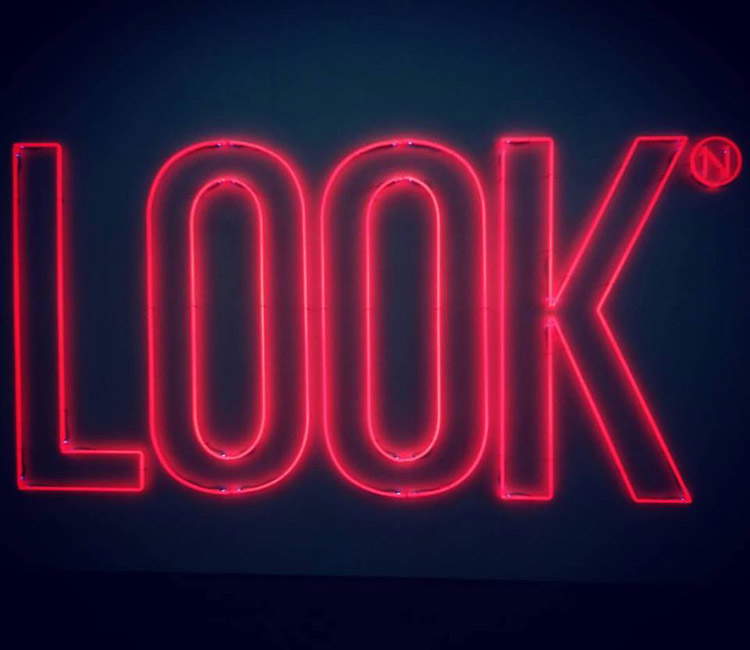
3. Antony Gormley, Open Swoon (2015; iron sculpture). Proposed by: Galleria Continua - San Gimignano, Italy.
A typical subject of the language of English sculptor Antony Gormley (London, 1950), the man broken down into geometric shapes has no recognizable identity: we could say that that man represents all of us, and the different forms he takes can symbolize the various situations we have to deal with, the moods we feel, the experiences we have in the course of our existence. “Art,” says Gormley, “is the medium through which we make known how it feels to be alive.” And this also applies to the OpenSwoon (literally “open swoon”) brought to Artissima by Continua.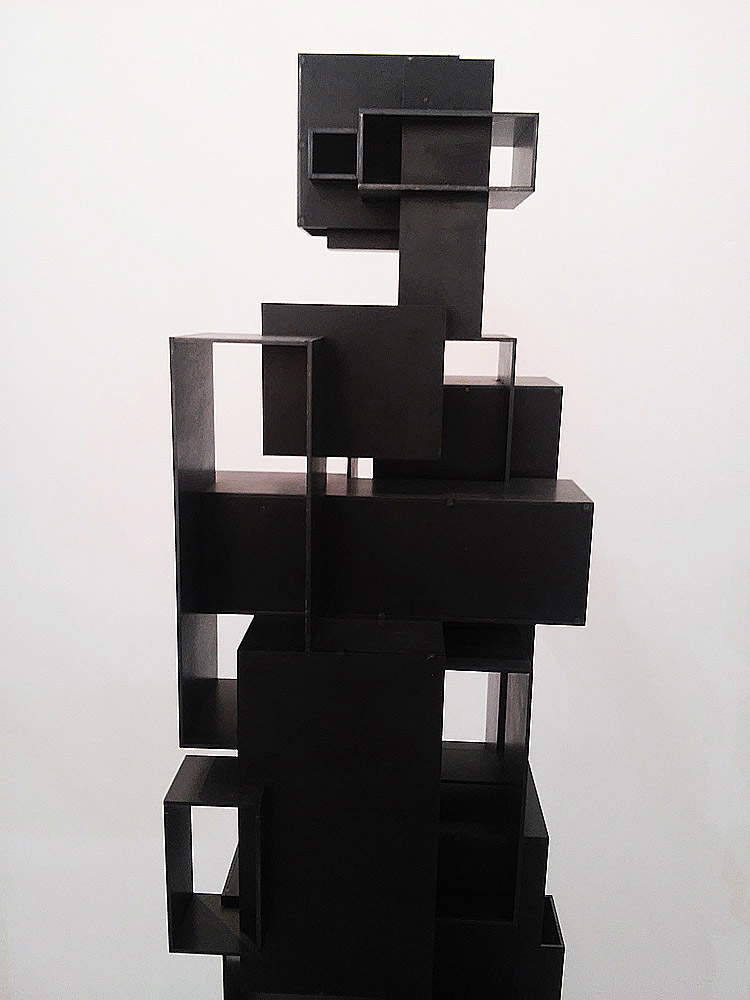
4. Mario Schifano, Water Lilies (1983). Proposed by: Galleria de’ Foscherari - Bologna, Italy
At Artissima there is also space for artists who are now historicized: among them is one of the greatest exponents of Italian pop art, Mario Schifano (Homs, 1934 - Rome, 1998), whose paintings we can find, including these Water Lilies, a subject to which the artist returned several times. A work that takes its cue from the history of art, and in particular from Monet’s Water Lilies, which are transformed in Schifano’s work into flowers with strong, almost violent colors, as if those water lilies were witnesses to the historical changes that have occurred in the hundred years of history that separate them from their Impressionist counterparts.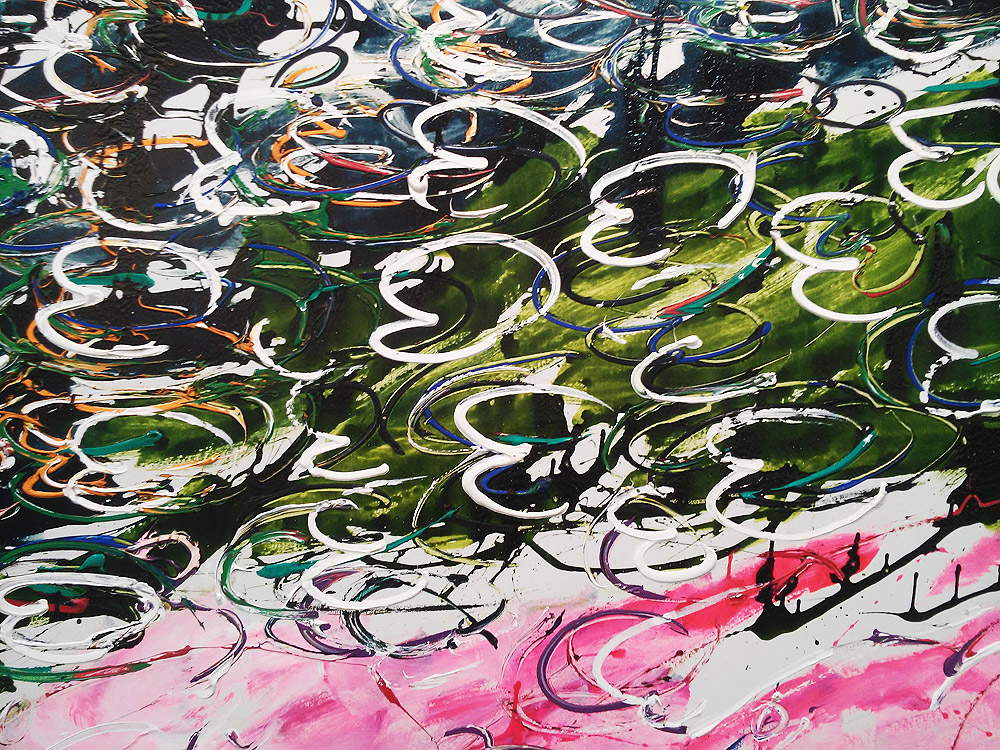
5. Nanni Balestrini, Quindici (1969; collage on paper, 26.5 x 27 cm). Proposed by: Frittelli Arte Contemporanea - Florence, Italy
Nanni Balestrini (Milan, 1935) was one of the leading exponents of Gruppo 63 and find at Artissima his collages with which he reflected on futurism proposing himself as a new avant-garde (succeeding, moreover: and it was perhaps that of Gruppo 63 the last true avant-garde in the history of Italian art), together with the works of all the artists who were participants in that cultural climate (Lamberto Pignotti, Ketty La Rocca, Lucia Marcucci), brought to Turin by Frittelli, is a splendid way to rediscover a fruitful season of our culture. Not least because many of the works, including the collages in the Quindici series, belong to that period.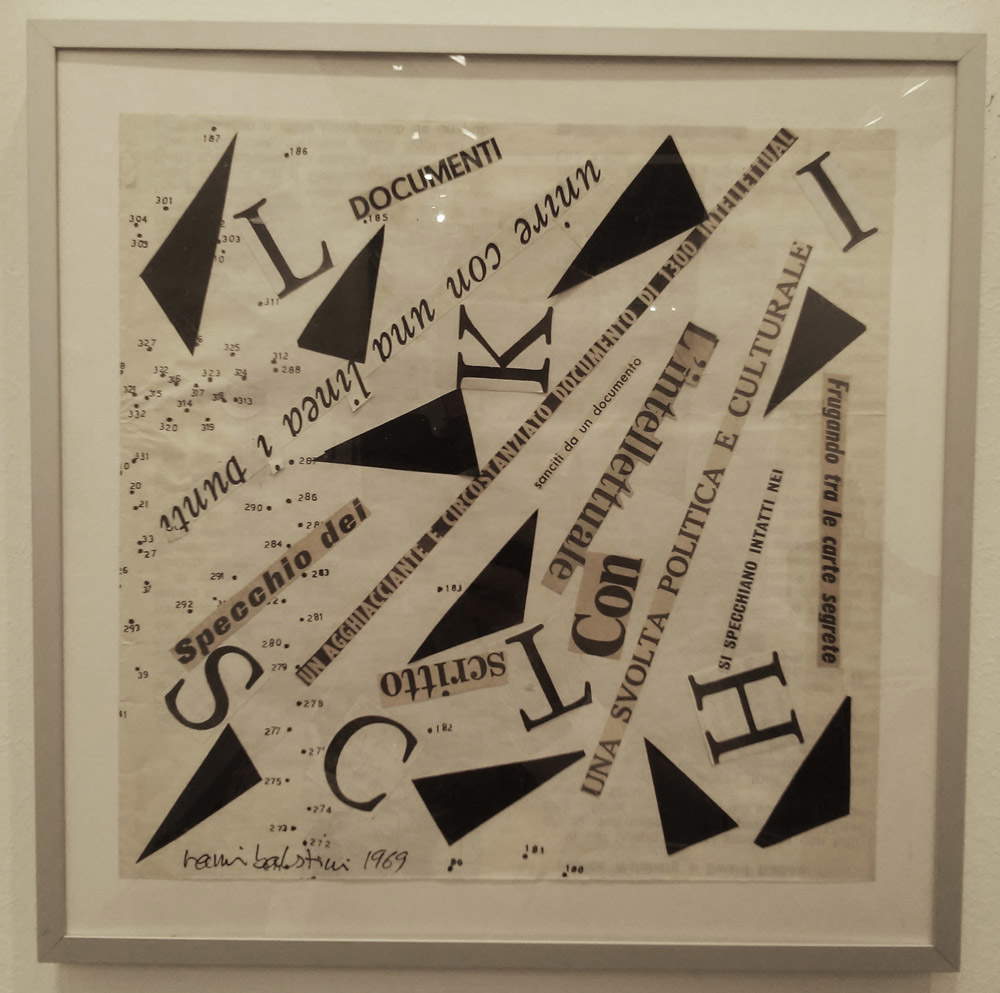
New talents
1. Summer Wheat, Coreena (2016; gold leaf, resin and acrylic paint, 175.2 x 121.9 cm). Proposed by: Braverman Gallery - Tel Aviv, Israel
U.S.-based Summer Wheat (Oklahoma City, 1977) certainly is not making her first appearance on important stages, but she is nonetheless an artist whose career is on the rise. Coreena, her work that arrived at Artissima, contains all the hallmarks of her style. Summer Wheat’s art is certainly not classically beautiful, but it contains great energy, is imbued with an almost shamanic eroticism, is connoted by an overwhelming expressive force, and draws heavily from tribal art. Ultimately intense and sensual art emerges from her works, and Coreena is no exception.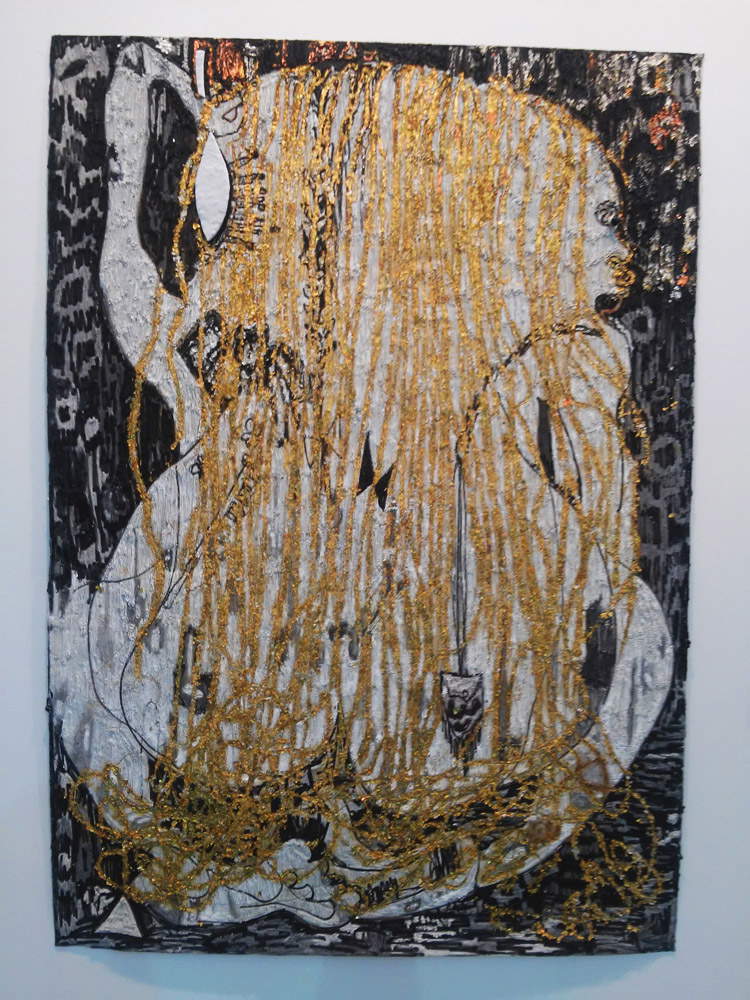
2. Simone Monsi, Transparent word banner (this website is so boring) (2016; perspex, steel, MDF; 135 x 200 x 12 cm). Proposed by: Placentia Arte - Piacenza, Italy.
One of the youngest artists at Artissima, Simone Monsi (Piacenza, 1988) is presented with a work from the Transparent word banners series: they are phrases taken from Tumblr, chosen from the simplest and most banal ones but at the same time able to be most successful, then decontextualized and translated into little Plexiglas letters. An art capable of intelligently dropping into the problems of today’s society, and Monsi (just this year, moreover, Placentia Arte organized his first solo exhibition) proves to be a sharp, attentive and intelligent observer.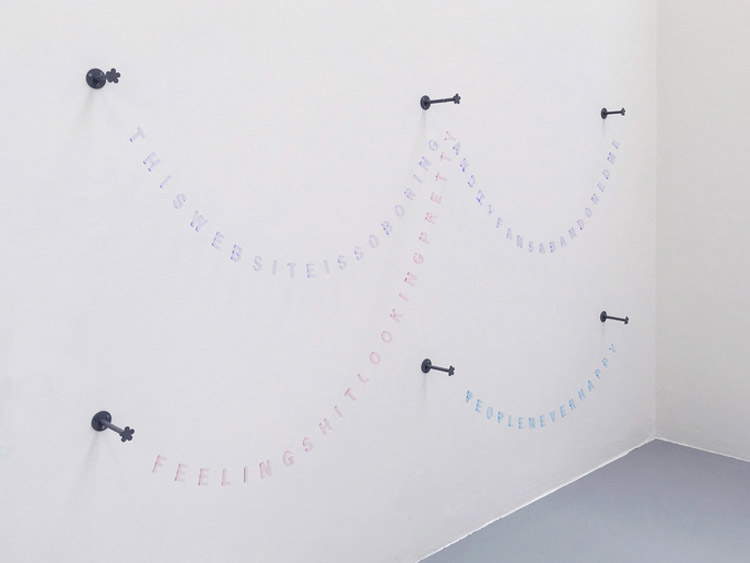
3. Cosimo Veneziano, Days of a Future Past (2017; charcoal on canvas, 100 x 200 cm). Proposed by: Alberto Peola - Turin, Italy.
Days of a Future Past is one of the latest works by Cosimo Veneziano (Moncalieri, 1983), presented for the first time this year at his second solo exhibition, hosted precisely by the Alberto Peola gallery in Turin. The artist rereads the propaganda images of the twentieth century to reflect on how propaganda itself emphasizes the destruction that presupposes the changes that take place in history: a process that contains contradictions (the one between destruction and novelty is but one: the artist also reflects on the disagreement between the magniloquence of the representations, which intend to celebrate a historical moment, and at the same time the censorship that characterizes the actions of much politics). Veneziano, moreover, was also selected for the Italian Art Depot Present.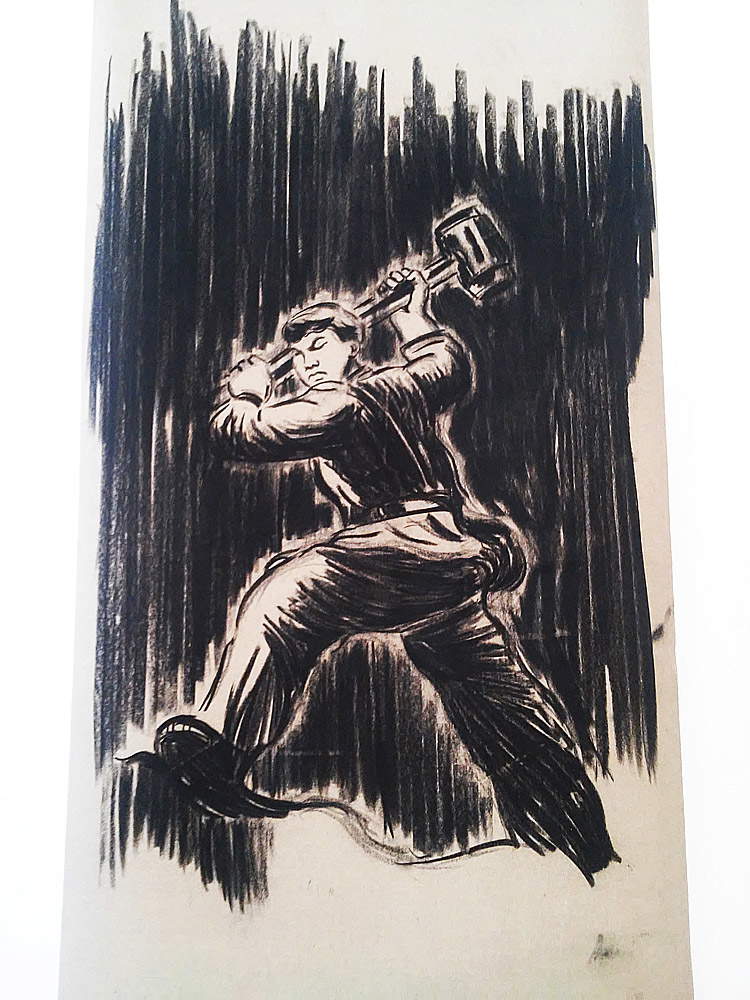
4. Catherine Parsonage, Campari Spring (2017; pencil, pastel, and watercolor on Fabriano paper, 111 x 66 cm). Proposed by: House of Egorn - Berlin, Germany.
Young artist Catherine Parsonage (Wirral, 1989), English-born but living in Italy, makes portraits that almost always have the female body as their main subject. “The artist’s practice,” we read in the catalog of the Present future section of Artissima, for which Catherine Parsonage was selected, “questions notions of gender and identity through a personal representational approach to corporeality, deconstructed and based on the use of color. The body is expressed as an entity in the making [...]. These ethereal portraits evoke the current frictions that have emerged from the digital turn, in their delicate features echoing the fragmentation of bodies and their images as a consequence of the expanded possibilities of reproduction, manipulation and circulation of images.”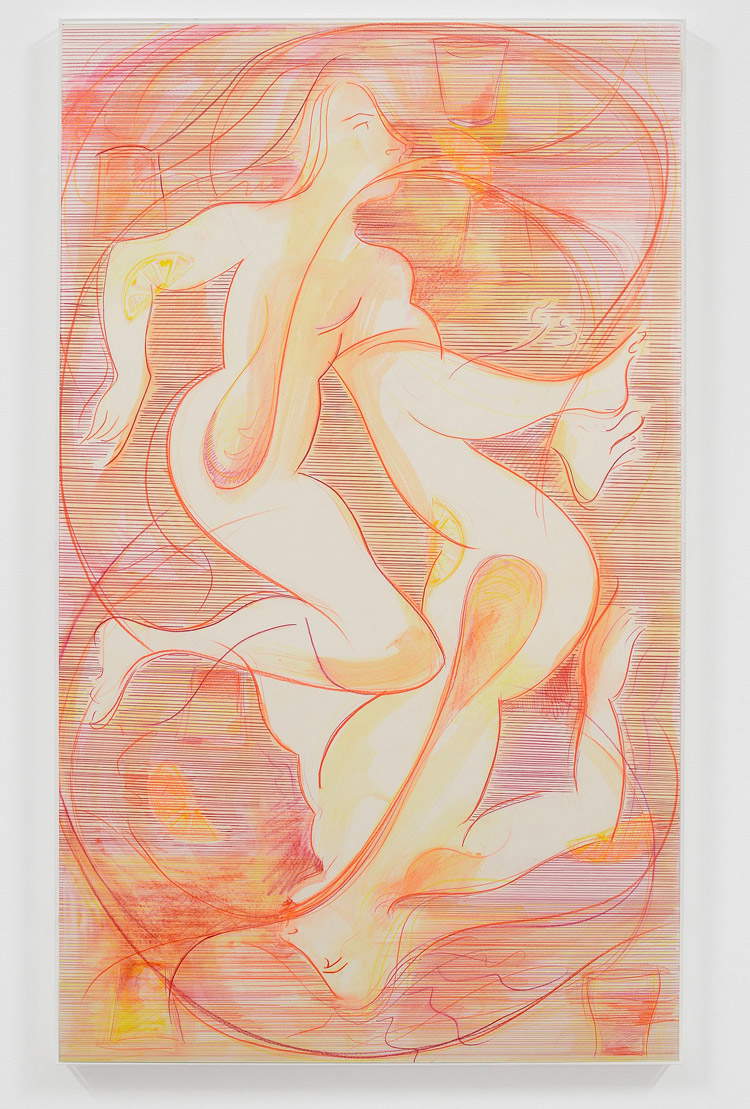
5. Joanna Piotrowska, Untitled (2017; gelatin silver print, 120 x 95 cm). Proposed by: Madragoa - Lisbon, Portugal.
Polish artist Joanna Piotrowska (Warsaw, 1985) asked several people to build, where they wanted, a tent, like the kind they used to make as children to play in, for example, by placing a sheet between two chairs. The result is a series of photographs, simply called Untitled and made between 2016 and 2017, which aims to highlight, with the childlike aspect that the images take on, “the fragile and intimate contradictions that underlie our identity” (so in the catalog): the artist, in other words, wants to emphasize how we all always need to find shelter or protection.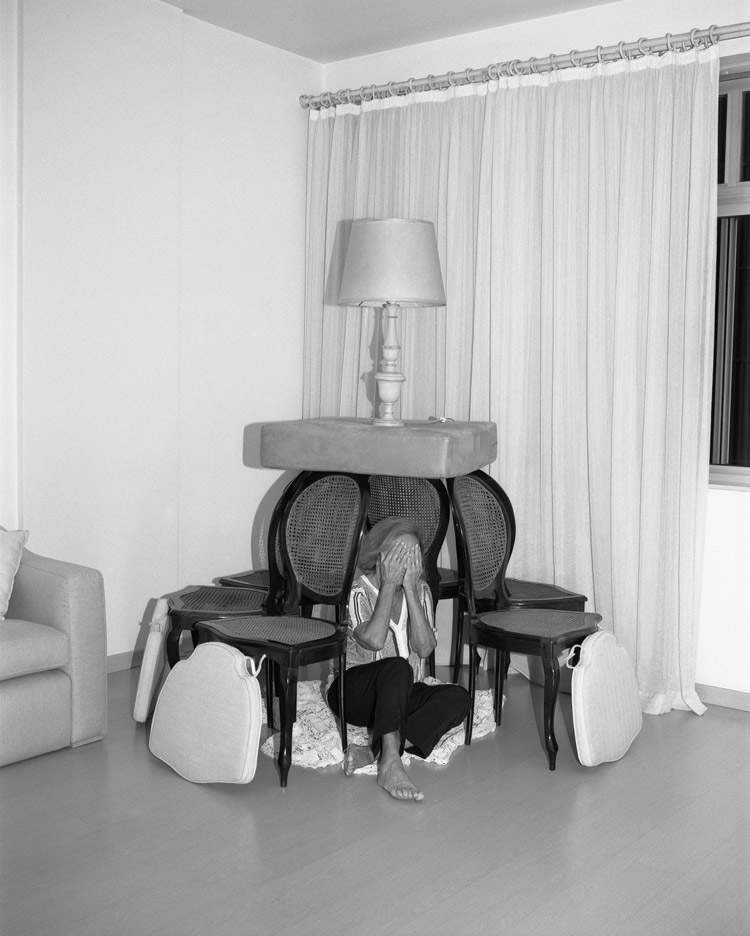
Works not to be missed
1. Nicola Samorì, The Fall of the Giants (2017; oil on copper, 70 x 50 cm). Proposed by: Monitor - Rome, Italy
Nicola Samorì (Forlì, 1977), one of the most interesting contemporary Italian artists, already present at the Venice Biennale, proposes a language rooted in seventeenth-century art (and which also makes use of traditional techniques such as oil on copper) and reinterprets it (with figurations that are nonetheless original) by subjecting it to castings of matter, tears, and burns, as if to highlight the passage of time and to emphasize that a work of art, an icon that appears to us to be fixed in time, is actually an object that undergoes a normal process of decay. This year, his strong and powerful works (and the Monitor gallery is offering an excellent selection at Artissima) were shown in a solo exhibition in Pesaro.
2. Abdoulaye Konaté, Alep (2017; tapestry, 346 x 236 cm). Proposed by: Primo Marella - Milan, Italy.
A traditional medium, tapestry, to represent a contemporary drama: Malian artist Abdoulaye Konaté (Diré, 1953) translates the tragedy of Aleppo into textile work. Crosses , stars and crescents as if to say that violence does not give discounts to anyone, a blood red that colors everything (the earth, the bodies lying on the ground, the buildings), a kind of fiery rain falling from the sky. It is one of the strongest works we find at the 2017 edition of Artissima.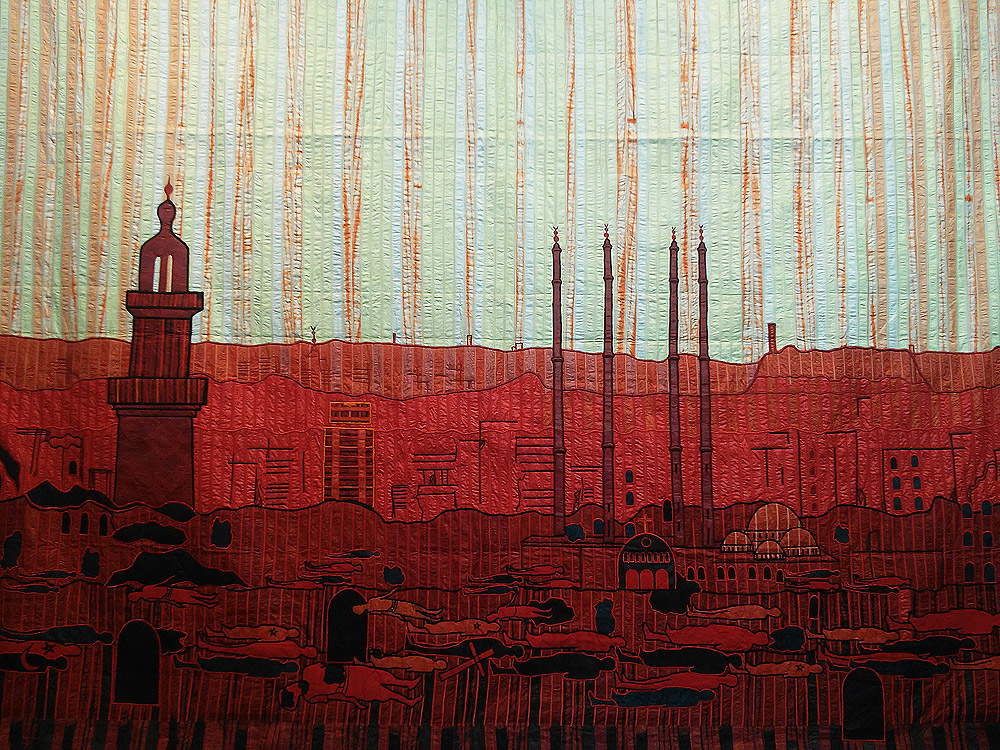
3. Giuseppe Penone, Cedar Skin. Ivy (2007; leather and bronze, 276 x 298 x 22 cm). Proposed by: Tucci Russo Studio for Contemporary Art-Torre Pellice, Italy.
Cedar skin is one of the most famous works by Giuseppe Penone (Garessio, 1947), a leading exponent of arte povera. It is a reflection on nature: it is a cast of a cedar bark made of leather. Animal and vegetable therefore become part of each other, involving ourselves, the viewers of the work, giving life according to new forms to that dialogue between man and nature that has always distinguished Penone’s art.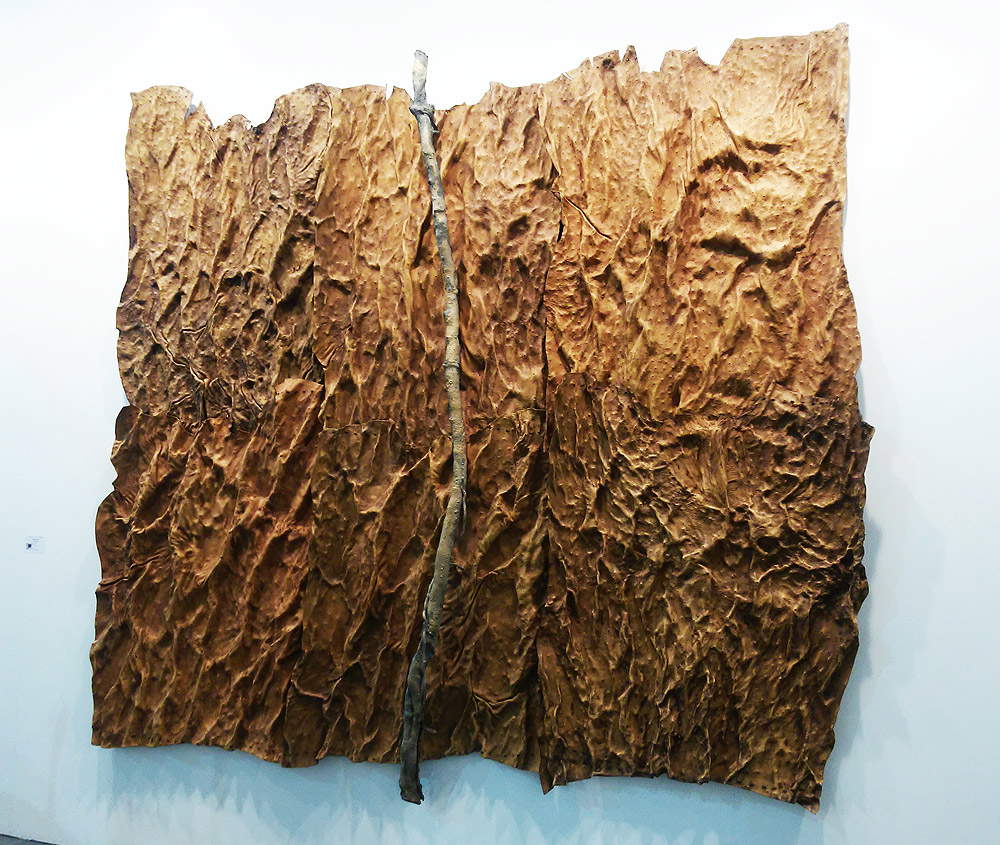
4. Jules de Balincourt, Truck stop blues (2016; oil on panel, 61 x 50.8 cm). Proposed by: Victoria Miro Gallery - London, UK
With the observational spirit of a Flemish artist (and to some extent his paintings almost hint at traditional Flemish art), Frenchman Jules de Balincourt (Paris, 1972) looks at reality with a disenchanted eye. “I cannot paint floral bouquets and pretend that everything is wonderful. It doesn’t interest me,” he said. And his reality comes in the form of small everyday landscapes connoted by acid and violent colors. Kind of like what happens in this Truck stop blues, which almost transports us to an American gas station, at night, with trucks pulling into the parking lot, to the melancholic notes of Ry Cooder.
5. Jacqueline de Jong, La clique au bassin (Série Noire) (1981; oil on canvas, 86 x 105 cm). Proposed by: Dürst Britt & Mayhew - The Hague, Netherlands
Selected for the Back to the future section, the works in Série Noire by Jacqueline de Jong (Hengelo, 1939) are inspired by the films of Fassbinder: works, we read in the Artissima catalog, “at once humorous and daring, figurative and iconographic, violent and formally flawless, surrealist and cinematic,” that give an idea of the temperament of a cosmopolitan and independent artist, but also disobedient, to the point of being expelled from the Situationist International by Guy Debord (and she later founded a Situationist magazine, The Situationist Times).
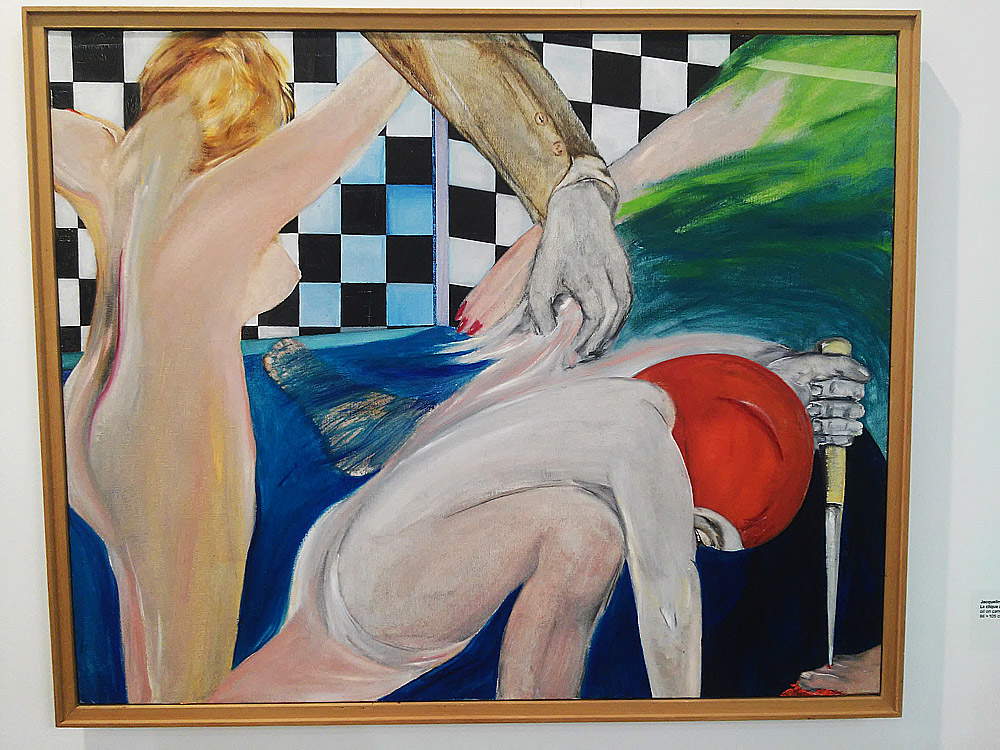
Warning: the translation into English of the original Italian article was created using automatic tools. We undertake to review all articles, but we do not guarantee the total absence of inaccuracies in the translation due to the program. You can find the original by clicking on the ITA button. If you find any mistake,please contact us.